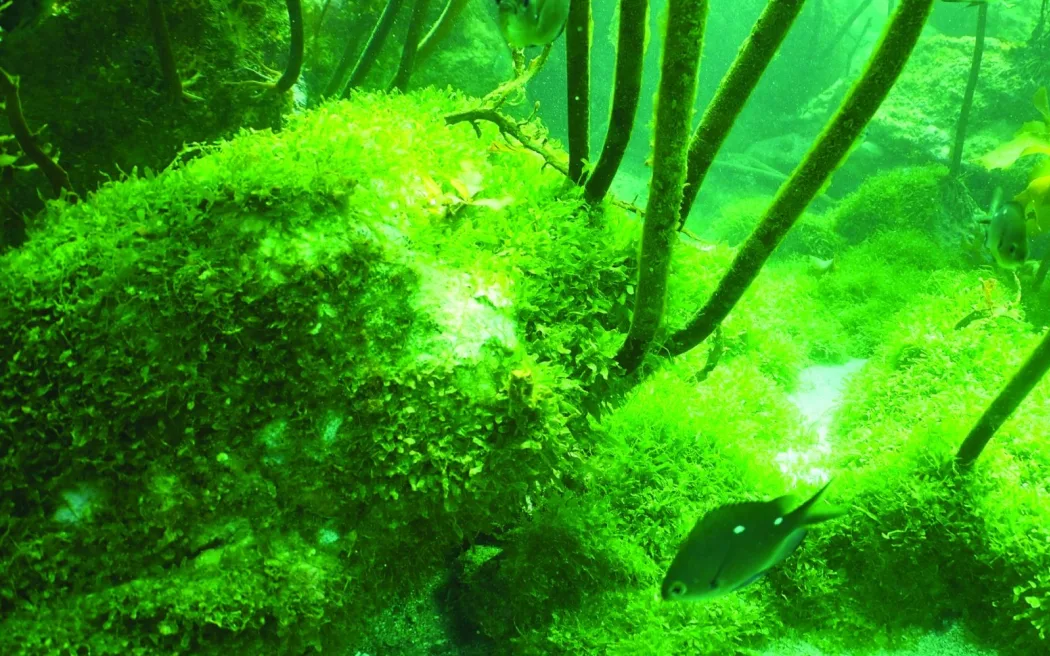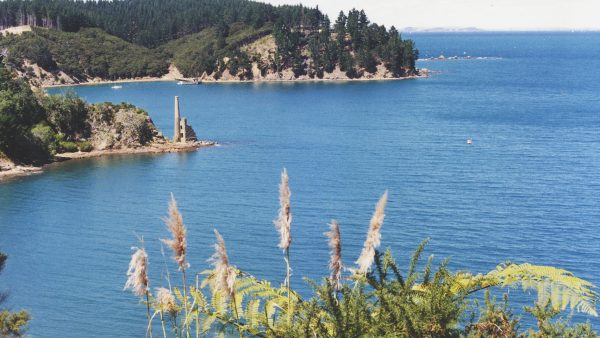Exotic Caulerpa seaweed has been found at Leigh, near the famous Goat Island Marine Reserve.
Auckland Council divers discovered a roughly one-square-metre clump of exotic caulerpa in Omaha Cove. Biosecurity New Zealand suspects it is the fast-growing pest and plans to treat the patch swiftly if confirmed.
John Walsh, Biosecurity New Zealand’s Readiness and Response Director, says that the origin of the caulerpa remains uncertain.
The discovery has reignited concerns on Aotea, following last month’s discovery of the issuance of permits for commercial crayfishing within controlled areas around the island, despite the presence of exotic caulerpa.
One of the vessels permitted to fish in the controlled areas, FV Crusader, is based in Leigh, heightening fears about the potential spread of caulerpa, from Aotea.
Barry Scott, Emeritus Professor at Massey University, warned last month: “I am disappointed that there was no direct contact auditing of whether the crayfish pots and boat were decontaminated before the boats left Aotea and went back to Leigh.” he said.
“Also amazed that the Chief Biosecurity Officer did not conclude there was a very high probability of spread of caulerpa from Aotea to Leigh or elsewhere given the number of pots involved and the need for all of them to have been thoroughly decontaminated before being dropped somewhere else.” he added.
The suspected caulerpa in Leigh was found near boat moorings, which include the wharf used by the commercial fishing boats permitted to work in controlled areas around Aotea.
In a review from MPI, commissioned following the revelations of the permits first covered by AoteaGBI.news last month, Peter Thomson, Biosecurity New Zealand’s Chief Biosecurity Officer, claimed there wasn’t a risk of further spreading Caulerpa.
“The review of permits issued to three commercial rock lobster operators has found the permits did not pose a risk to further spreading exotic caulerpa, however, there should have been better engagement prior to permitting decisions, and compliance processes needed to be stronger.” he said.
Given its rapid spread and ability to smother sea life, exotic caulerpa poses a threat to biodiversity, kai moana, and both recreational and commercial fishing. Since its discovery, it has spread to various locations including Te Rāwhiti Inlet, Ahuahu Great Mercury Island, and Waiheke Island.
Local commercial fishers on Aotea adhere to strict regulations and do not take their vessels to the mainland, minimizing the risk of spreading Caulerpa.







